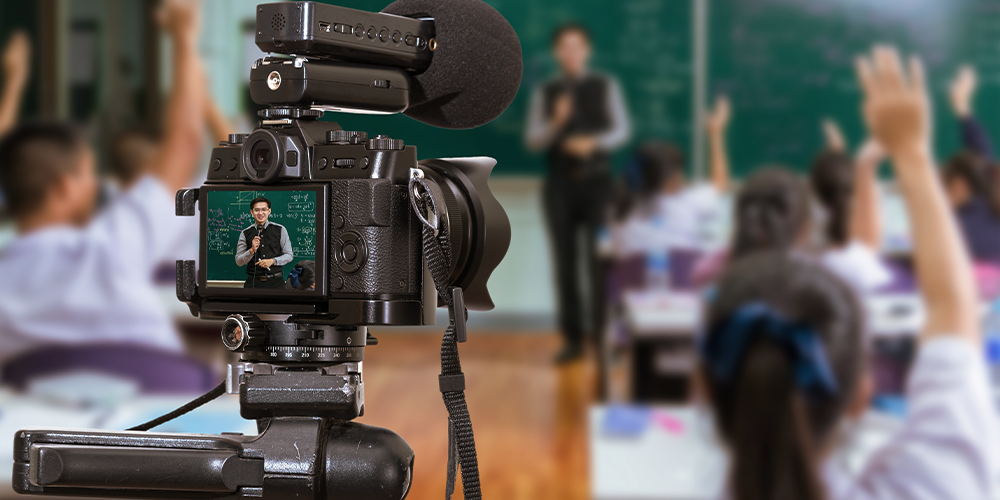In education, integrating video into your reflective practice can be transformative for both new and veteran teachers. Imagine having a special lens that allows you to closely examine your teaching in action. This is precisely what video affords teachers—an opportunity to delve into the subtleties of classroom dynamics!
Pressing record is only the first half of the process, real growth comes from being able to effectively reflect on what you see. Targeted questions make for an excellent compass as you watch your instruction on video, guiding us through the progression of student thinking, their interactions, and the depth of understanding achieved.
By learning to notice, teachers gain valuable insight into the learning experience of their students. This exploration is a catalyst for continuous professional growth, fostering a culture of self-awareness and informed decision-making that significantly enhances teaching effectiveness. The following set of guiding questions comes from Dr. Miriam Sherin, professor of Learning Sciences and the Associate Provost for Undergraduate Education at Northwestern University, and serves as a thoughtful companion, empowering educators to tap into the transformative potential of video, unravel the layers of classroom dynamics and advance their journey toward instructional excellence.
Essential Guiding Questions for Using Classroom Video
- What is the progression of student thinking during the video clip?
- Can you identify key moments where students demonstrate shifts or growth in their understanding?
- How do students build upon their prior knowledge or experiences as the lesson unfolds?
- Are there instances where misconceptions are addressed and corrected, or where new insights emerge?
- How are students interacting and responding to one another?
- Observe the nature of student interactions – are they collaborative, competitive, or a mix of both?
- What communication strategies do students use when working together?
- Are there instances of students providing peer support or challenging each other’s ideas?
- What ideas are the students sharing?
- Identify the main concepts or ideas that students express during the discussion.
- Are there recurring themes or patterns in the ideas shared by different students?
- How do students contribute to building a collective understanding of the topic?
- What does student participation look and sound like?
- Analyze the level of engagement demonstrated by individual students.
- Consider the variety of ways students participate – verbally, through gestures, or using other non-verbal cues.
- Does the level of participation vary among students, and if so, how?
- What do students understand about the topic they are discussing?
- Assess the depth of student understanding by noting instances where they demonstrate mastery of key concepts.
- Identify any areas of confusion or common misconceptions that arise.
- How do students articulate their understanding, and are there opportunities for deeper exploration?
- What can we infer that the students think the goal of the lesson is?
- Look for evidence in student discussions that indicates their perception of the lesson’s purpose.
- Are students able to articulate the learning objectives or essential questions?
- Do their responses align with the intended goals of the lesson, and if not, why?
- How can the video help me to better prepare for subsequent student interactions and future lessons?
- Consider how the observed student interactions and responses inform your instructional decisions.
- Identify effective teaching strategies and moments that contribute to positive student engagement.
- Reflect on areas for improvement and consider adjustments to your teaching approach based on the observed student dynamics.
So much happens in our classrooms at any given moment, and as teachers, we often have to choose where to place our focus. Video gives us a chance to take a closer look with a different lens!
Whether you’re a video veteran, or curious about integrating it into your reflective practice, catch up with Dr. Miriam Sherin on video reflection best practices in episode 79 of Teaching Channel Talks. In this conversation, Dr. Wendy Amato and Dr. Miriam Sherin talk about how the use of video has changed over time, caution against its evaluative use, and explain how “learning to notice” can positively impact our teaching practice.
Keep these questions on hand for your next video reflection in this downloadable PDF.






